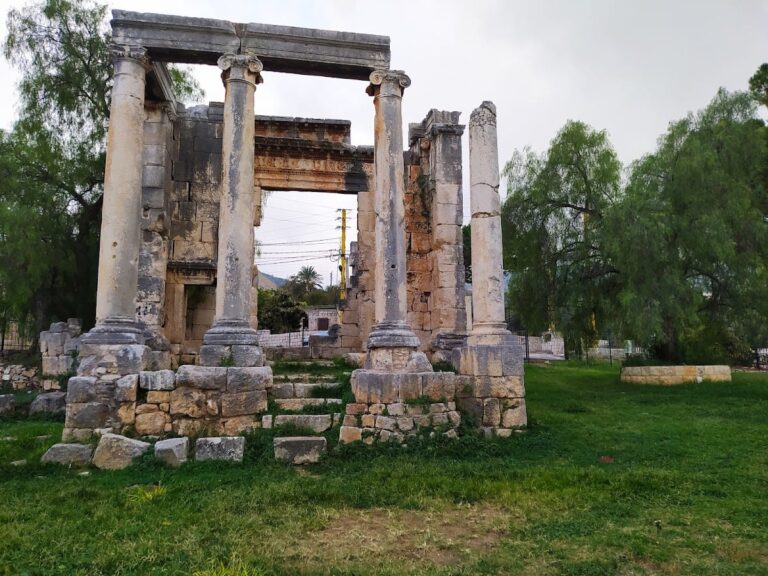Naous Roman Temple Complex: A Roman Religious Site in Northern Lebanon
Visitor Information
Google Rating: 4.6
Popularity: Low
Google Maps: View on Google Maps
Country: Lebanon
Civilization: Roman
Remains: Religious
History
The Naous Roman Temple complex is located on a hill near the modern village of Rechdebbine in northern Lebanon. This site was constructed during the Roman period, serving as a religious sanctuary in a prominent position about 600 meters above sea level. Its elevated location made the temples visible from afar.
The temples were likely dedicated to solar cult practices. A relief showing the face of the Sun God was found near the second temple, indicating the presence of sun worship. The first temple’s door lintel once displayed a winged sun disk motif, a symbol with Egyptian origins, which also appears at other nearby temples such as Sh’him. This points to cultural and religious influences crossing regional boundaries during the Roman era.
Remains
The site consists of two Roman temples situated on a hilltop, each enclosed within its own sacred boundary known as a temenos. The eastern temple is better preserved, retaining its full platform, two standing columns topped with Corinthian capitals, and parts of its walls. In front of this temple, the remains of an altar are visible. The temple’s entrance once featured a decorated lintel bearing a winged sun disk, a motif now missing but recorded by 19th-century scholar Ernest Renan.
This eastern temple includes a staircase inside the main cult room leading to a second floor, as well as a crypt beneath the structure that was not accessible. These architectural elements are similar to those found in other regional temples, such as those at Niha and Baalbek. The temple is accessed through a decorated gateway or propylaea, marking the entrance to the sacred enclosure.
The western temple is less intact, with its enclosure gate displaced from its original base, likely due to seismic activity. A relief depicting the Sun God’s face lies in front of this temple’s ruins, reinforcing the solar association of the site. Although stones were gathered for rebuilding after the temple’s destruction, the restoration was never carried out.
North of the eastern temple, archaeologists have identified remains of a later settlement consisting of several houses. These structures indicate that the area remained inhabited after the temples’ religious functions ended, reflecting a shift in the site’s use over time.










